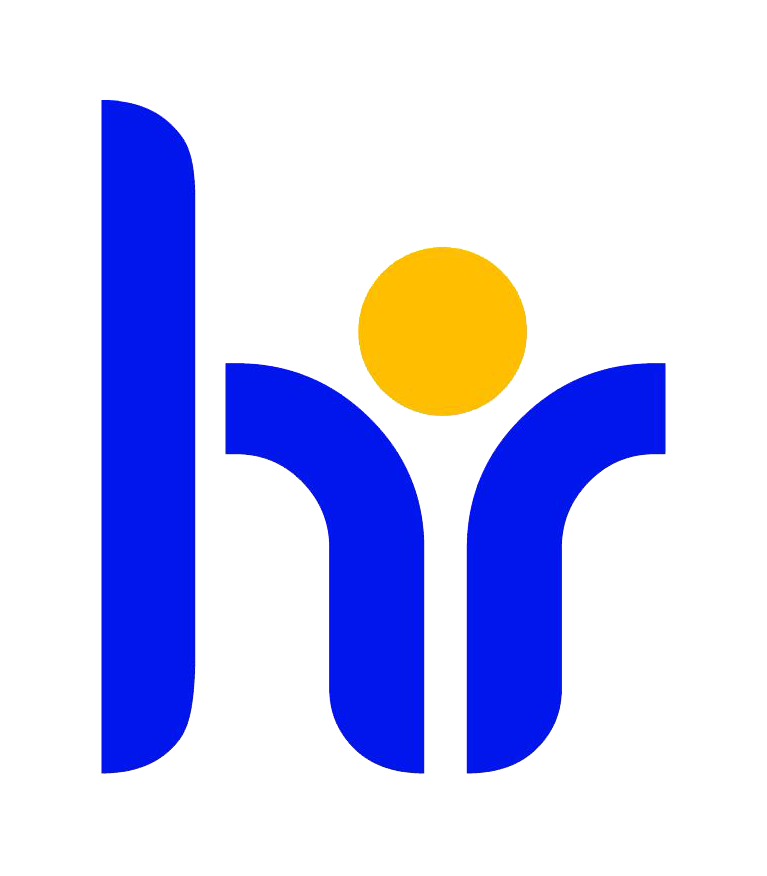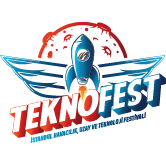
“…Turkey is just at the very beginning stages, but it has set very aggressive goals for the year 2023. Current installed capacity of wind farms is about 1.6 gigawatts in Turkey, but in 2023; which means only 12 years from now, this is planned to be increased up to 20 gigawatts. This is more than 10 times increase. So wind energy investments are exploding in Turkey.”
“We saw that renewable energy in general was one of the focal points of METU’s vision. Since METU has already established a solar energy center, we thought wind energy will be a perfect candidate for complementing this effort.”
“We want RÜZGEM to be a national focal point in wind energy. We have already established good relationship with the wind energy industry. There is an effort to establish a national wind energy technology platform and METU Center for Wind Energy will be one of the members of this platform. It is going to be the only wind energy research center in Turkey with this capacity.”
“…this investment is so big that it will boost anyone who is interested to do research here. It is open to all professors and therefore it is going to be big contribution I guess in terms of academic development of METU in general; in terms of publication numbers, good journal publications, in terms of making an academic research impact in the field of wind energy.”
TG: Thank you for making this interview. We would like to talk about RÜZGEM (METU Center for Wind Energy); how it has reached its current position and especially its role in your career. Let me start with your academic career; please tell us about how you have decided to specialize in the field of wind energy.
Interview with Assist. Prof. Dr. Oğuz Uzol, Director of METU Center for Wind Energy; RÜZGEM
By Tuğba Gürçel
OU: I graduated from the Department of Aeronautical Engineering in METU in 1992. I got my Master’s degree in 1995 and then I went to the US for my PhD at Pennsylvania State University and stayed there until 2000. For my PhD I have worked on turbine blade cooling applications in aircraft jet engines. Then I moved to Johns Hopkins University at Baltimore and I continued my studies in turbomachinery aerodynamics. In 2005 I returned back to Turkey and started as a faculty member in the Department of Aerospace Engineering at METU and since then I am working as an Assistant Professor in the same department. As to how I chose to work in this specific field; basically my background is aerodynamics of rotating machinery, which includes aircraft engine compressors, turbines, helicopter rotors and wind turbine rotor systems. Therefore, I got into the field of wind energy. My fundamental research area is experimental fluid mechanics and aerodynamics but in terms of applications, I apply this expertise in different systems, from compressors to wind turbines. Aerodynamic problems and research methodologies are similar.
I realized that all over the world, in the US, in Europe, in China and in Turkey, wind energy is a blooming field and there is a huge amount of effort in terms of research. Since I have been working in the field of turbomachinery, I was naturally interested and I started working in the field of wind turbine research. Everywhere in the world, people are trying to solve all kinds of engineering problems related to wind turbine systems and many countries that are leaders in this field, like the US, Germany, China, Spain, Denmark; all of them develop their own technology and wind turbines, they have their own wind turbine manufacturers. This technology development is very much based on lots of engineering research effort performed in either renewable energy research centers or wind energy research centers. These centers basically support the development of wind turbine technology in those countries.
TG: Are these university-based initiatives?
OU: There are two types: In some countries these are university-based centers and in some countries these are national labs. For example, in the US, there are university-based research centers but most of the wind-energy related research is being done at National Renewable Energy Laboratory (NREL) in Colorado, which is a national research center. In Netherlands for example, Delft University has the DUWIND Research Center, which is specifically focused on the wind energy related research. There is also the organization called ECN, which is the national energy center of the Netherlands and one of their driving groups is the wind energy group. So it can be both; it can either be a university-based research center or in many countries there are national laboratories that focus their attention on the topics of wind energy research.
When we come to Turkey, Turkey is just at the very beginning stages, but it has set very aggressive goals for the year 2023. Current installed capacity of wind farms is about 1.6 gigawatts in Turkey, but in 2023; which means only 12 years from now, this is planned to be increased up to 20 gigawatts. This is more than 10 times increase. So wind energy investments are exploding in Turkey. On the other hand, all the turbines that are being used in large wind farms are of foreign origin and there is little indigenous technology contribution. There are some companies that manufacture various parts under license but in terms of designing components such as the blades, the gearbox, the generator or the design of the whole system for that matter, all of these are basically of foreign origin. If we do not do something to increase Turkish technology contribution, what will happen is, we will be less dependent on fossil fuels importing less petroleum but now we will be dependent on foreign wind turbine technology. In order to minimize that, we have to develop our own indigenous technology in Turkey. For this, of course many things have to be done. Establishing a research center which focuses on wind energy is only one of these steps. It is certainly not the only step but one of the most fundamental steps because technology development and educated human resource in wind energy are the major missing components. So you have to educate enough people, develop technology, do research, solve engineering problems and then you can contribute to the technology development in the country. That was the main idea behind establishing this center.

TG: With this purpose on mind, which steps did you follow to receive funding necessary for the establishment of the center? To which funding opportunities did you apply?
OU: When you want to develop a technology in any field of engineering, you have to have two capabilities; first, you have to have computer simulation capability, meaning you have to be able to solve physical equations to understand basics of engineering-related problems, but this is not enough by itself. You also have to have experimental measurement and testing capability. Without the experimental and testing capability, it is impossible to develop reliable and efficient engineering systems. That was the main challenge I experienced when I came back from the US. Research labs were very limited with little activity and inadequate instrumentation. Regardless to whether it is related to wind energy or not, many fundamentals were basically non-existent. Therefore, I immediately started to write all kinds of research project proposals. I got METU BAP (Scientific Research Projects) and TÜBİTAK projects with which I started establishing a laboratory. Of course the funding we get from sources like TÜBİTAK or BAP is no way close to being enough to buy any kind of state of art measurement equipment. Basically we had only one option to get enough funding to develop our laboratories and to establish an infra-structure towards wind energy research and that is through a bigger funding mechanism, which was the DPT (State Planning Organization) program. It was one of the biggest funding resources; this is why we have applied. We have always wanted to get into the field of wind energy because it is a blooming field and a hot topic all around the world. We have started to talk about these ideas in 2007-2008 with each other, with our department chair and with the president’s office. We saw that renewable energy in general was one of the focal points of METU’s vision. Since METU has already established a solar energy center, we thought wind energy will be a perfect candidate for complementing this effort. So, we first wrote a project proposal in 2009 and it was not accepted and then we revised it and resubmitted it in 2010 and this time it got accepted. In 2011, METU Center for Wind Energy (METUWIND, ODTÜ-RÜZGEM) is officially established.

TG: Let me ask more about the project that you have submitted to DPT. Was it an interdisciplinary project?
OU: Yes. Wind turbine technology itself is an interdisciplinary topic therefore naturally we had to get in touch with relevant departments. Basically faculty members from eight different departments from METU collaborated in one way or another towards preparing this project led by the Department of Aerospace Engineering. Five engineering departments; Departments of Aerospace Engineering, Mechanical Engineering, Civil Engineering, Electrical and Electronics Engineering and Metallurgical and Materials Engineering. Aside from the mentioned engineering departments; we had faculty members from Department of Architecture, Department of City and Regional Planning, and Department of Business Administration. The wind energy sector is not only the composed of engineering companies. When you consider wind energy investments, economy related to wind energy markets all of these are out of the specialty of engineers. Integration of wind turbine systems into architecture, in terms of planning regions, in terms of establishing wind farms, and may be developing new projects in terms of social acceptance, all of these require different specialties.
TG: After your proposal got accepted, which steps did you follow to establish this center?
OU: After we received the news that our proposal was accepted for funding, first of all what we did was to prepare an application through the President’s Office and to send it to YÖK towards officially establishing the center. It was published in Official Gazette on February 2011 and thus the center was officially established. In 2010 when we first submitted this proposal, it was actually submitted as two complementary proposals: one from METU and one from TOBB ETÜ. This was made at that time with the request of DPT; as TOBB ETÜ also wanted to prepare a proposal towards establishing a center for wind energy DPT suggested us to come together and to give complementary proposals. They said not to submit a joint proposal but to prepare complementary ones, and we did so. The METU part was funded, TOBB ETÜ part was later announced to be accepted but this year DPT said that they do not want to fund two separate centers and they want us to join these centers under the roof of METU so that there will only be one center. Therefore most of the work packages that were planned by TOBB ETÜ part were transferred to METU. All the funding and also the work packages were consolidated under METU Center for Wind Energy. Of course in our project group now we do not only have professors from METU but we also a project group from TOBB ETÜ. In our group meetings, for example towards establishing different laboratories, professors from TOBB ETÜ participate in our groups.
TG: So, you are now at the stage of buying the equipment and setting up the center…
OU: Because of merging of these two projects with TOBB ETÜ, the funds transfer has been delayed so we received our budget in late July 2011. This is a three-year project and during these three years we will basically focus on two main jobs: The first one is the establishment of the research infrastructure. We are planning to establish six different laboratories. The first one is the Aerodynamics Laboratory which will include a large-scale wind tunnel, the second one is the Structural Mechanics and Materials Laboratory, third one is the Structural Dynamics Laboratory, fourth one is the Composite Materials Laboratory, fifth one is Electro-mechanics Laboratory, and the sixth one is High Performance Computing Laboratory. We have laboratory directors for each one of these labs and who in turn have their own working groups. Those working groups meet regularly and decide upon design of the laboratory, which instruments will be purchased, etc. Many of the groups started purchasing equipments. Basically in terms of establishing the infrastructure we buy state of the art instrumentation and software and establish test facilities. This will constitute the basic research infrastructure of this center. This is the first job and we basically spend most of our funding for this purpose. However, our vision is not limited to that and only establishing the laboratories will not make RÜZGEM a real center. What we are planning to do during these three years is also work towards establishing the character of RÜZGEM. This involves all kinds of effort; for example marketing activities, corporate identity activities, setting up protocols with different institutions and relations with different organizations. All of these have to be done in parallel to the establishment of the infrastructure so at the end of three years this center will be ready in terms of its infrastructure and its character, meaning that it will have officially established its position in the wind energy industry. It is expected to have good relationships with industry, investors, other research institutions in or outside Turkey and only after this RÜZGEM can become a real and complete center. In three years, we are trying to make this center a working identity. In fact, we already started most of these efforts even before we received the budget. In June 2011 we held a workshop for determining the strategic plan for RÜZGEM; to determine its vision, mission, projects, etc. We had 40 to 50 participants from academia and industry. Things are going well and they have to continue in an accelerated fashion in coming years. In 2012, we have many goals towards establishing infrastructure, start building up the large-scale wind tunnel for example, start building up the large-scale blade test facilities, structural test facilities and things have to go in an accelerated rate so by the deadline of 2014 we will have these available.

TG: As far as I understand, the sustainability of the center is somehow related to its relations with industry. So how your relations are at this stage with industry in Turkey, how do the state and industry perceive this center?
OU: This is actually in our vision statement. We want to be a national focal point in wind energy. We have already established good relationship with the wind energy industry. There is an effort to establish a national wind energy technology platform and METU Center for Wind Energy will be one of the members of this platform. It is going to be the only wind energy research center in Turkey with this capacity. Therefore, wherever we go, in whatever meeting we attend, whatever wind-energy related conference we attend, we get good responses because in terms of technology development since this will probably be the only wind energy center that will be capable of supporting technology development. When it comes to industry, they have various needs. There are mainly two types of companies; the first type is investors, which basically operate like airlines. They get licenses, buy wind turbines from manufacturers, establish wind farms that generate electricity and sell it and try to make money out of it. The second type of companies is wind turbine manufacturers. There are many investor companies in Turkey; but from the second type; the manufacturers, there are only a limited number of small-scale manufacturers. There are very little or no megawatt scale manufacturers that can compete in the free market. All of these companies are interested in terms of the activities we are planning to do here at METUWIND. Especially the turbine manufacturers are interested because they require all kinds of engineering technology development related activities. So right now we have very good starting relationships and in terms of sustainability, we hope that at the end of three years we will have built enough mechanisms, enough protocols to be able to get this center running by itself. This center will have to be an integral part of the wind energy community in Turkey. In addition, this center will write additional projects; it will write national research projects and it will try to participate in EU and other international projects. So wherever we can get we can use as source for funding, we would like to use it. Because after all these effort and energy being spent towards the establishment of this center, we do not want it to slow down after the initial funding from the DPT gets finished. That is basically why we are trying to do all the other stuff in addition to the infrastructure establishment, that is why we are trying to make it a corporate identity because otherwise you cannot generate enough mechanisms to sustain the center. That is the main reason why we are doing this relationship building and communications with the wind energy sector.
TG: But it is still debated whether or not wind energy would be a major source of energy produced in Turkey. How do you perceive Turkey’s position in terms of wind energy production?
OU: Wind energy investments today are exponentially growing. It is currently contributing little (1.5 gigawatts) to the total energy production in Turkey, which is somewhere about 45-50 gigawatts. But what is being planned, as I have previously mentioned, is that by the year 2023 that 20 gigawatts of wind farms will be established, which will cover about 20 percent of the total energy production.

TG: It is good to hear that Turkey is following right policies to grow this field…
OU: Yes, if you talk about wind energy professionals there are always issues people complain about. However, if you take a look at the greater picture, what you see in general is that there are big incentives. One of them is towards encouraging investors for investing in wind energy and another is an incentive towards developing indigenous technology in the wind energy sector. The Renewable Energy Law was accepted in 2005 and then it was updated last year, December 2010. This update includes incentives towards indigenous technology utilization. So if an investor is using a turbine system that incorporates some Turkish-made technologies, the state will pay more when buying electricity. Of course, there are many details related to this incentive that authorities are trying to sort out but the point is that we have to develop technology right here. Probably the renewable energy law will be continually updated in the coming years towards achieving the 2023 goal with as much Turkish technology contribution as possible. Only setting 20 gigawatts from wind energy goal is not enough by itself. In addition to this, “with as much Turkish contribution as possible” should be added to the law.
TG: Let me ask how this project, and then this center contributed to your academic career…
OU: Since we got now a good amount of funding, we have the ability to establish a laboratory that we have always wanted. So, in terms of being a researcher I am at the most delightful part right now I can buy the instrumentation that I have wanted for a long time; I can do experiments, write papers, have students working in these labs. In terms of research, it is a big boost towards my career. Because as an experimental researcher, I need to build a laboratory, need to buy equipment and instrumentation and build test facilities and all of these require high amounts of funding. Of course being the director of the center takes a lot of my time in terms of administrative affairs but this is part of the job. However in parallel to this, I have and I will have the equipment that I need so that I can do any research I want and publish papers. The thing is that there will be a huge investment here in terms of research infrastructure so anyone who is interested in doing wind energy related research; it can be any professor from engineering or other departments, is more than welcome to use all these facilities. People can write for example TÜBİTAK projects, if they are wind energy related research, they do not have to request funding from TÜBİTAK because it is already here. They can only request funding for the support for students, for travel, etc. So I think it will not only boost my career but this investment is so big that it will boost anyone who is interested to do research here. It is open to all professors and therefore it is going to be big contribution I guess in terms of academic development of METU in general; in terms of publication numbers, good journal publications, in terms of making an academic research impact in the field of wind energy.
TG: Lastly, please let me ask your advices for young researchers who would like to establish their laboratories and may be turn them into research centers. How should they start? Which funding opportunities are more achievable for young researchers and which steps should they take?
OU: When I was at The Johns Hopkins University, as a post-doctoral fellow I was working with two graduate students and a Russian immigrant engineer. We had all kinds of problems in our test facility, everyday and everywhere. Every time we asked the Russian engineer, who was older than us and much more experienced indeed, what we were going to do when we faced with this or that problem, he always said “Just do it!” So I think that if someone wants to do research here, if someone wants to establish a laboratory, the opportunities are out there. When you compare the funding opportunities to the US, the funding environment is much less competitive. This means young researchers can do anything they want; they can write proposals, and relatively easily find funding. We wrote a project proposal and as an assistant professor, I got multi-million dollar grant! This would be like a dream, something almost impossible for an assistant professor of foreign origin living in the US. So there are huge opportunities out there and if young researchers really want to do research, to establish a laboratory, they can do it and they just have to do it. If they really believe in an idea they should try to convince other people in terms of joining them. Everybody has their own career path so it is not like giving an advice means “if they follow my advice they will get a project”, it just does not work like that. It is rather a dynamic situation, everybody’s boundary conditions are different so everybody will have to assess their environment, in terms of their relations, research goals, and their curiosity and then they will follow the path that they choose. In that sense, I can only tell my experience and what happened to me which could only be an example and not a guide.
TG: Thank you for this interview…
OU: You are welcome…










